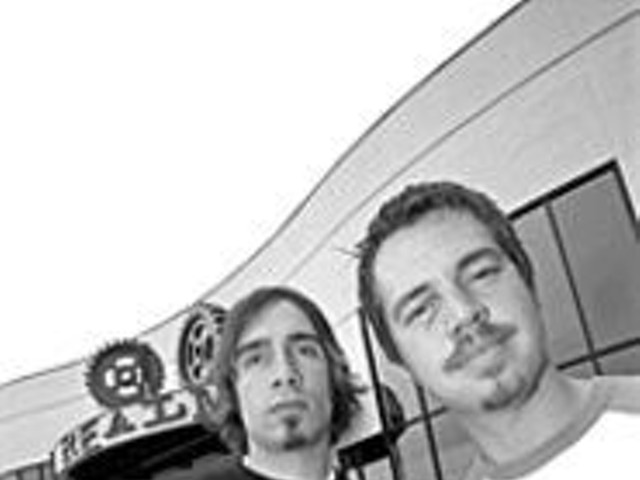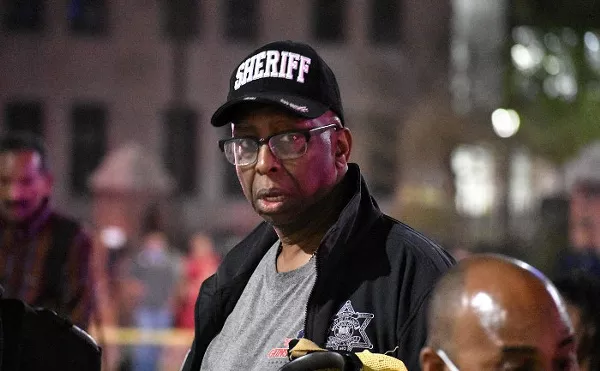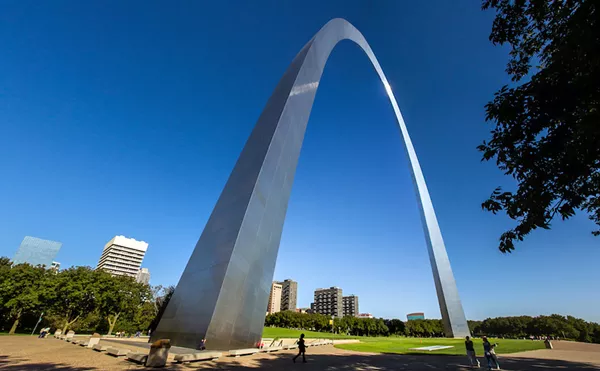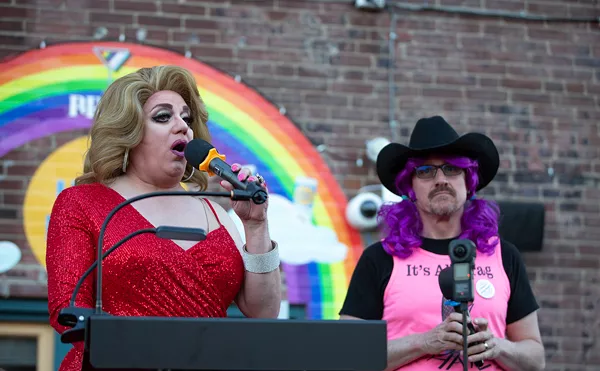On Monday morning, thousands of onlookers in Mohave, California, witnessed the historic venture through high-powered telescopes as pilot Mike Melvill blasted SpaceShipOne a little over 62 miles into the deep beyond. Burt Rutan, the spacecraft's designer, now has high hopes of capturing the coveted Ansari X Prize, a $10 million award that goes to the first civilian team to make it into space twice within two weeks.
The story began on May 18, 1996, when a group of wealthy businessmen and community boosters gathered amid great fanfare under the Gateway Arch to announce the X Prize. National Aeronautics and Space Administration (NASA) administrator Dan Goldin flew to St. Louis to attend the festivities. Earlier in the day, twenty astronauts spoke at local schools about the wonders of space exploration.
The prize, everyone hoped, would give St. Louis the same kind of worldwide acclaim it received when nine St. Louisans teamed up to sponsor Charles Lindbergh's historic 1927 journey across the Atlantic Ocean.
But eight years after its nascence, no one in town seemed to remember the X Prize -- at least not until Melvill climbed into the record books. It was a question that baffled the organization's directors and sponsors.
"I guess it's like the saying that a prophet is only accepted outside his homeland," says Gregg Maryniak, executive director of the X Prize Foundation. "I think we have to do a better job telling our story, but there's also this mentality in St. Louis of celebrating our past accomplishments. I mean, how long are people going to keep talking about the 1904 World's Fair? It's like, 'Get over it already!'"
The competition has garnered national and international media attention, the most recent flurry of publicity centering on Rutan's team, which is financed by Microsoft co-founder and billionaire Paul Allen. After Monday's successful voyage, the SpaceShipOne team is now considered the front-runner to win the X Prize. Allen has spent between $20 million and $25 million on SpaceShipOne -- more than the payout he would earn if he won the Ansari X Prize. But then, no one is in this space race for money alone.
To date, 26 teams representing 7 different countries have entered the X Prize challenge. (None of the teams hail from St. Louis, but Kirkwood High School grad Jim Toole leads a team based out of Orlando.)
To win the prize, a team must send a manned vehicle with the equivalent weight of three people 62 miles into suborbital space, then repeat the task with the same aircraft within two weeks. The goal of the X Prize is to promote the development of technology that will lead to low-cost commercial space travel for private citizens. That's why the spacecraft must carry a payload of more than a single passenger.
If no team manages two successful space journeys by year's end, the $10 million prize offer expires. There are no plans to extend the deadline. Maryniak says the time limit on the award was established to hasten research and development among the competing teams and estimates that the reward has spawned nearly $400 million in research and development among the teams.
For the most part, stories in the national media have focused on the individual teams competing in the X Prize, completely ignoring St. Louis' role in the competition -- this despite the fact that city benefactors provided the lion's share of the seed money to fund the prize.
In the underground tunnel that connects the St. Louis Science Center to the James S. McDonnell Planetarium in Forest Park hangs an exhibit devoted to the X Prize. It includes a five-foot-tall bronze trophy to be presented to the winner of the space competition, as well as a list of the 81 people who have financially sponsored the competition. The donors, who call themselves the New Spirit of St. Louis Organization, read like a veritable who's who of St. Louis' wealthiest and most influential. Each of them paid $25,000 to help start the X Prize.
Even though St. Louis contributors launched the project, their significance is overshadowed by Anousheh and Amir Ansari, owners of a Texas-based venture-capital firm who gave the X Prize a multimillion-dollar gift last year. The Ansaris have a dream of traveling in space. As a reward for their generosity, the foundation recently changed the name of the prize to the Ansari X Prize.
"This was going to be something based in St. Louis and a great way to exploit St. Louis to the United States and the world," says Steve Schankman, president of Contemporary Productions and the second person to plunk down the $25,000 for the prize. "But, I don't know, I think it's followed by the science world but perhaps it's just not sexy enough for the general public."
The X Prize competition has its detractors, including Ramesh Agarwal, director of the Aerospace Research and Education Center at Washington University.
The X Prize will undoubtedly raise the bar for space technology, Agarwal says. But how practical will that technology be?
"This could allow for much faster transportation, but at what cost? Look at the Concorde: It achieved supersonic transportation but eventually failed because it was far too costly for the general public."
X Prize Foundation executive director Maryniak concedes that initial flights aboard spaceships developed under the X Prize will likely cost upward of $100,000, but he expects that to decline to $20,000 once the ships are capable of carrying more than just a few passengers.
He's hoping that someone will win the X Prize -- and the sooner, the better. "When that happens, this will be huge," he predicts. "Then I think you'll hear a lot more about the X Prize. I mean, look at Charles Lindbergh. No one heard of him or the Spirit of St. Louis until he piloted the plane over the Atlantic. Thing was, he spent many years fundraising and preparing for that flight. No one remembers that."





